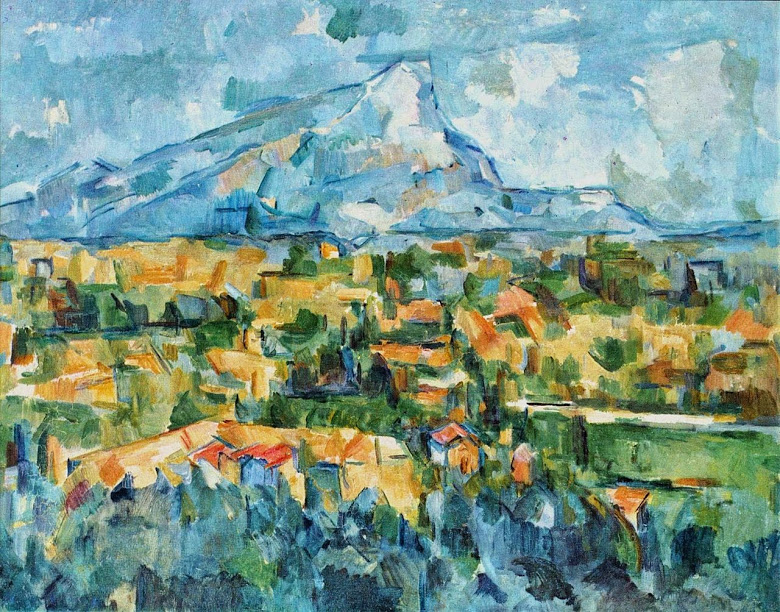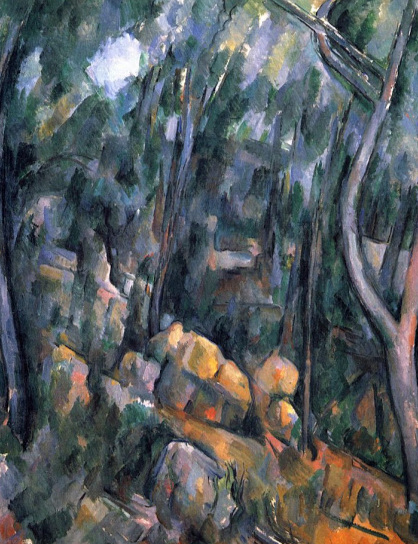Cubism, the art form that laid the foundation to modern art, with its deconstructed blocks and lack of pattern has always been a less understood form of art. Whenever I have talked about cubism to people, I have realized their confusion, bordering into apathy, for the art form. Its, however, perhaps so easy to understand if we see it as a “point of departure” from an otherwise realistic painting. During the era, that was exactly what Picasso, Braque and Metzinger were doing, in many cases, by getting inspired from Cezanne’s paintings. Pablo Picasso regarded Cézanne as a "mother hovering over," Henri Matisse as "father to us all."[1]
“Cézanne’s insistence on redoing nature according to a system of basic forms was important to Picasso’s own interest at that time. In Cézanne’s work Picasso found a model of how to distill the essential from nature in order to achieve a cohesive surface that expressed the artist’s singular vision. Beginning in 1907, Picasso began to experiment with Cézanne’s techniques alongside fellow artist Georges Braque. Cézanne was a constant touchstone for the two artists during this period of collaboration, which eventually resulted in the invention of Cubism by 1909. Throughout Picasso’s stylistic evolution over the next seven decades, he continued to borrow from and reinterpret Cézanne’s art.”
But that is what art is, isnt it? The advent of the 20th century, saw art taking concepts from pictures and realistic compositions and deconstructing them to create a different perspective. As David Hockey would later put in his article ‘Through the Looking Glass’. Cubism, that way, presents a nice way to the artists to depart from what a photographers eye captures as realism and fire up the imaginations. It gives the artist a freedom to expressionism
Cezanne’s paintings that way had two aspects that enthused others: geometry and multiple-perspectives. Even though Cézanne was mainly trying to create volume through color planes, the Cubists saw in Cézanne a tendency to represent nature with geometric shapes, which is central to the early development of Cubism. Paul Cézanne, Mont Sainte-Victoire, 1904, Philadelphia Museum of Art (Left) and Paul Cézanne, The Grounds of the Château-Noir, c.1904, National Gallery, London (Right)
The second element is perspective. In many paintings by Cézanne, it looks as if each object has its own independent space with its own point of view, which goes against the traditional single-point-of-view linear perspective introduced in the Renaissance. The Cubists followed Cézanne in breaking the traditional rules of perspective, and then went further by introducing multiple views of the same subject from different perspectives.
Paul Cezanne forms the bridge to Cubism and also helps us understand how the fractured forms of cubism flows smoothly from conventional ideas of realism. No wonder he was the “father of all” of the Cubists.

